#Key features of a cloud computing service provider
Explore tagged Tumblr posts
Text
key Feachure of A Cloud Computing Service Provider

https://it4int.com/dedicated-server-usa/
#7 characteristics of cloud computing#Key features of a cloud computing service provider#benefits of cloud computing#fractures of cloud programming#Five key features of a cloud computing service provider
0 notes
Text
It starts with him
What was once a promise of technology to allow us to automate and analyze the environments in our physical spaces is now a heap of broken ideas and broken products. Technology products have been deployed en masse, our personal data collected and sold without our consent, and then abandoned as soon as companies strip mined all the profit they thought they could wring out. And why not? They already have our money.
The Philips Hue, poster child of the smart home, used to work entirely on your local network. After all, do you really need to connect to the Internet to control the lights in your own house? Well you do now!Philips has announced it will require cloud accounts for all users—including users who had already purchased the hardware thinking they wouldn’t need an account (and the inevitable security breaches that come with it) to use their lights.
Will you really trust any promises from a company that unilaterally forces a change like this on you? Does the user actually benefit from any of this?
Matter in its current version … doesn’t really help resolve the key issue of the smart home, namely that most companies view smart homes as a way to sell more individual devices and generate recurring revenue.
It keeps happening. Stuff you bought isn’t yours because the company you bought it from can take away features and force you to do things you don’t want or need to do—ultimately because they want to make more money off of you. It’s frustrating, it’s exhausting, and it’s discouraging.
And it has stopped IoT for the rest of us in its tracks. Industrial IoT is doing great—data collection is the point for the customer. But the consumer electronics business model does not mesh with the expected lifespan of home products, and so enshittification began as soon as those first warranties ran out.
How can we reset the expectations we have of connected devices, so that they are again worthy of our trust and money? Before we can bring the promise back, we must deweaponize the technology.
Guidelines for the hardware producer
What we can do as engineers and business owners is make sure the stuff we’re building can’t be wielded as a lever against our own customers, and to show consumers how things could be. These are things we want consumers to expect and demand of manufacturers.
Control
Think local
Decouple
Open interfaces
Be a good citizen
1) Control over firmware updates.
You scream, “What about security updates!” But a company taking away a feature you use or requiring personal data for no reason is arguably a security flaw.
We were once outraged when intangible software products went from something that remained unchanging on your computer, to a cloud service, with all the ephemerality that term promises. Now they’re coming for our tangible possessions.
No one should be able to do this with hardware that you own. Breaking functionality is entirely what security updates are supposed to prevent! A better checklist for firmware updates:
Allow users to control when and what updates they want to apply.
Be thorough and clear as to what the update does and provide the ability to downgrade if needed.
Separate security updates from feature additions or changes.
Never force an update unless you are sure you want to accept (financial) responsibility for whatever you inadvertently break.
Consider that you are sending software updates to other people’s hardware. Ask them for permission (which includes respecting “no”) before touching their stuff!
2) Do less on the Internet.
A large part of the security issues with IoT products stem from the Internet connectivity itself. Any server in the cloud has an attack surface, and now that means your physical devices do.
The solution here is “do less”. All functionality should be local-only unless it has a really good reason to use the Internet. Remotely controlling your lights while in your own house does not require the cloud and certainly does not require an account with your personal information attached to it. Limit the use of the cloud to only the functions that cannot work without it.
As a bonus, less networked functionality means fewer maintenance costs for you.
3) Decouple products and services.
It’s fine to need a cloud service. But making a product that requires a specific cloud service is a guarantee that it can be enshittified at any point later on, with no alternative for the user owner.
Design products to be able to interact with other servers. You have sold someone hardware and now they own it, not you. They have a right to keep using it even if you shut down or break your servers. Allow them the ability to point their devices to another service. If you want them to use your service, make it worthwhile enough for them to choose you.
Finally, if your product has a heavy reliance on the cloud to work, consider enabling your users to self-host their own cloud tooling if they so desire. A lot of people are perfectly capable of doing this on their own and can help others do the same.
4) Use open and standard protocols and interfaces.
Most networked devices have no reason to use proprietary protocols, interfaces, and data formats. There are open standards with communities and software available for almost anything you could want to do. Re-inventing the wheel just wastes resources and makes it harder for users to keep using their stuff after you’re long gone. We did this with Twine, creating an encrypted protocol that minimized chatter, because we needed to squeeze battery life out of WiFi back when there weren’t good options.
If you do have a need for a proprietary protocol (and there are valid reasons to do so):
Document it.
If possible, have a fallback option that uses an open standard.
Provide tooling and software to interact with your custom protocols, at the very least enough for open source developers to be able to work with it. This goes for physical interfaces as much as it does for cloud protocols.
If the interface requires a custom-made, expensive, and/or hard-to-find tool to use, then consider using something else that is commonly available and off the shelf instead.
5) Be a good citizen.
Breaking paid-for functionality on other people’s stuff is inherently unethical. Consider not doing this! Enshittification is not a technical problem, it is a behavioral one. Offer better products that are designed to resist enshittification, and resist it yourself in everything you do.
Nothing forced Philips to do what they are doing: a human made a decision to do it. They could have just as easily chosen not to. With Twine’s server lock-in, at least we chose to keep it running, for 12 years now. Consider that you can still make a decent living by being honest and ethical towards the people who are, by purchasing your products, paying for your lifestyle.
We didn’t get here by accident. Humans made choices that brought us to this point, and we can’t blame anyone for being turned off by it. But we can choose to do better. We can design better stuff. And we can choose not to mess things up after the fact.
We’re putting this into practice with Pickup. (We also think that part of an IoT reset is giving users the creative freedom of a general-purpose device.) If you’re looking for something better and our product can fill a need you have, consider backing us. We cannot claim to be perfect or have all of the answers, but we are absolutely going to try. The status quo sucks. Let’s do something about it.
Published October 15, 2023 By Jeremy Billheimer
137 notes
·
View notes
Text
800G OSFP - Optical Transceivers -Fibrecross


800G OSFP and QSFP-DD transceiver modules are high-speed optical solutions designed to meet the growing demand for bandwidth in modern networks, particularly in AI data centers, enterprise networks, and service provider environments. These modules support data rates of 800 gigabits per second (Gbps), making them ideal for applications requiring high performance, high density, and low latency, such as cloud computing, high-performance computing (HPC), and large-scale data transmission.
Key Features
OSFP (Octal Small Form-Factor Pluggable):
Features 8 electrical lanes, each capable of 100 Gbps using PAM4 modulation, achieving a total of 800 Gbps.
Larger form factor compared to QSFP-DD, allowing better heat dissipation (up to 15W thermal capacity) and support for future scalability (e.g., 1.6T).
Commonly used in data centers and HPC due to its robust thermal design and higher power handling.
QSFP-DD (Quad Small Form-Factor Pluggable Double Density):
Also uses 8 lanes at 100 Gbps each for 800 Gbps total throughput.
Smaller and more compact than OSFP, with a thermal capacity of 7-12W, making it more energy-efficient.
Backward compatible with earlier QSFP modules (e.g., QSFP28, QSFP56), enabling seamless upgrades in existing infrastructure.
Applications
Both form factors are tailored for:
AI Data Centers: Handle massive data flows for machine learning and AI workloads.
Enterprise Networks: Support high-speed connectivity for business-critical applications.
Service Provider Networks: Enable scalable, high-bandwidth solutions for telecom and cloud services.
Differences
Size and Thermal Management: OSFP’s larger size supports better cooling, ideal for high-power scenarios, while QSFP-DD’s compact design suits high-density deployments.
Compatibility: QSFP-DD offers backward compatibility, reducing upgrade costs, whereas OSFP often requires new hardware.
Use Cases: QSFP-DD is widely adopted in Ethernet-focused environments, while OSFP excels in broader applications, including InfiniBand and HPC.
Availability
Companies like Fibrecross,FS.com, and Cisco offer a range of 800G OSFP and QSFP-DD modules, supporting various transmission distances (e.g., 100m for SR8, 2km for FR4, 10km for LR4) over multimode or single-mode fiber. These modules are hot-swappable, high-performance, and often come with features like low latency and high bandwidth density.
For specific needs—such as short-range (SR) or long-range (LR) transmission—choosing between OSFP and QSFP-DD depends on your infrastructure, power requirements, and future scalability plans. Would you like more details on a particular module type or application?
2 notes
·
View notes
Text
Your Digital Transformation Partner for IT Development Services
In today's rapidly evolving digital landscape, businesses must stay ahead by embracing innovative technology solutions. MSM CoreTech empowers businesses with cutting-edge IT development services that drive efficiency, enhance productivity, and foster growth. As a trusted IT development company, we bridge the gap between technology and business goals, confidently helping organizations of all sizes navigate the digital transformation journey.

The Importance of IT Development Services in the Digital Era
Technology is no longer a luxury—it's a necessity. Businesses that leverage IT solutions gain a competitive edge, improve operational efficiency, and create seamless customer experiences. Whether you are a startup looking to establish a digital presence or an enterprise seeking to optimize existing processes, investing in IT development services can significantly impact your growth trajectory.
Key benefits of IT development services include:
✔ Enhanced Efficiency – Automate tasks, reduce manual workload, and streamline operations.
✔ Scalability – Develop solutions that grow alongside your business needs.
✔ Cost Savings – Reduce operational costs with innovative technology integration.
✔ Security & Compliance – Protect sensitive data and ensure regulatory compliance.
✔ Seamless Customer Experience – Deliver user-friendly applications and platforms for your customers.
At MSM CoreTech, we specialize in providing tailored IT solutions that align with your business objectives and drive long-term success.
Our Comprehensive IT Development Services
As a leading IT development company, we offer a full spectrum of services to help businesses thrive digitally.
1. Custom Software Development
Off-the-shelf software often lacks the flexibility businesses need. We create custom software solutions tailored to your requirements, ensuring optimal performance and efficiency.
2. Website Development & Design
Your website is the foundation of your online presence. We design and develop responsive, high-performance websites that enhance user engagement and drive conversions.
3. Mobile App Development
The demand for mobile apps continues to rise. We develop feature-rich, user-friendly mobile applications that provide seamless functionality and an intuitive user experience.
4. Cloud Solutions
Cloud computing is the future of IT infrastructure. Our cloud solutions offer scalability, security, and flexibility, enabling businesses to operate efficiently in a connected world.
5. UI/UX Design
User experience plays a crucial role in the success of any digital product. Our UI/UX experts craft visually appealing, intuitive, and engaging interfaces that enhance usability.
6. E-Commerce Development
In the fast-growing digital marketplace, a powerful e-commerce platform is essential. We develop robust, secure, scalable e-commerce solutions that drive online sales.
7. Digital Marketing & SEO
A great product or service is meaningless if it doesn't reach the right audience. Our digital marketing and SEO services ensure your brand gets the visibility it deserves, driving traffic and increasing conversions.
8. IT Consulting & Support
Technology is complex, but we simplify it for you. Our IT consulting services help businesses make informed decisions, while our ongoing support ensures seamless operations.
Why Choose MSM CoreTech as Your IT Development Partner?
With countless IT companies in the market, why should you choose MSM CoreTech? Here's what sets us apart:
🚀 Expertise & Innovation – We stay at the forefront of technology, bringing the latest innovations to our clients.
🎯 Tailored Solutions – No two businesses are alike, and neither are our solutions. We create custom IT strategies tailored to your unique needs.
💡 Client-Centric Approach – Your success is our priority. We work closely with you to ensure your goals are met.
🔒 Security & Reliability – We implement advanced security measures to safeguard your business data and digital assets.
🌍 End-to-End Services – From development to deployment and support, we handle it all so you can focus on what matters most—growing your business.
Partner with MSM CoreTech for a Future-Ready Business
The digital revolution is here, and businesses that fail to adapt risk being left behind. Partnering with a reliable IT development company like MSM CoreTech ensures you stay ahead of the competition with cutting-edge IT development services tailored to your business needs.
Whether you need a custom software solution, a high-performance website, a powerful mobile app, or digital marketing strategies to enhance your brand presence, we've got you covered. Let's work together to unlock new opportunities and drive digital success.
Ready to transform your business? Contact MSM CoreTech today and take the first step toward a brighter, more innovative future!
2 notes
·
View notes
Text
5 key Trends in INFORMATION and COMMUNICATION TECHNOLOGY (ICT)
In today's ever-changing technological landscape, staying current on the latest trends is critical for both individuals and businesses. These patterns influence how we communicate, connect, and complete tasks in both our personal and professional lives. The following are five key trends in ICT that are making waves now, along with examples to demonstrate their significance.

1. CONVERGENCE
Convergence in ICT refers to the combination of various technologies to generate forms of communication and information. This trend focuses on establishing a seamless user experience by combining multiple functionalities into a single device or platform. Convergence has been a driving force in the creation of smartphones, which combine a phone, camera, music player, and internet browser in one device.
Examples:
- Smartphones: Combine various functions like calling, browsing, and photography.

- Smart TVs: Integrate television with internet browsing and streaming services.

2. SOCIAL MEDIA
Social media has become an essential part of our daily lives, changing the way we communicate and share information. Platforms such as Facebook, Twitter, and Instagram enable users to interact, create, discuss, modify, and share user-generated content. These platforms allow users to interact with a global audience, making social media an effective tool for personal and professional communication.
Examples:
- Facebook: Connects people globally and allows for sharing of updates, photos, and events.
- Twitter: Known for its microblogging feature, where users post short, concise updates.

3. MOBILE TECHNOLOGIES
The proliferation of smartphones and tablets has changed the way we access information and complete jobs. These gadgets have evolved into mini-computers capable of running a variety of apps that were previously limited to desktops. Mobile technology has permitted internet access at any time and from any location, making it important in today's fast-paced society.
Examples:
- iOS: Used in Apple devices such as iPhones and iPads.
- Android: An open-source operating system developed by Google, used by many mobile manufacturers.

4. ASSISTIVE MEDIA
Assistive media refers to technologies and services that help people with visual and reading impairments. These technologies make sure that everyone, regardless of physical restrictions, has access to and benefits from digital material. Assistive media is more than just accessibility; it is also about inclusivity.
Examples:
- Screen readers: Convert text to speech, allowing visually impaired users to interact with digital content.
- Braille displays: Provide tactile output of text for users who are blind.

5. CLOUD COMPUTING
Cloud computing has transformed how we store, access, and manage data. Users can utilize remote servers hosted on the internet to store data and access apps from anywhere in the globe. This tendency has resulted in enhanced productivity, scalability, and collaboration, particularly in the corporate sphere.
Examples:
- Google Drive: Allows users to store files online and access them from any device.
- Dropbox: A cloud storage service that enables easy file sharing and backup.

These developments demonstrate ICT's dynamic nature and tremendous impact on our lives. These trends, whether they improve connectivity, enable accessibility, or revolutionize data management, are altering the future of technology in previously imagined ways. Staying educated and flexible to these trends will be critical to success in the digital age.
Passed by: JEVE ASHLEY C. SUAGA
2 notes
·
View notes
Text
The AWS Advantage: Exploring the Key Reasons Behind Its Dominance
In the ever-evolving landscape of cloud computing and web services, Amazon Web Services (AWS) has emerged as a true juggernaut. Its dominance transcends industries, making it the preferred choice for businesses, startups, and individuals alike. AWS's meteoric rise can be attributed to a potent combination of factors that have revolutionized the way organizations approach IT infrastructure and software development. In this comprehensive exploration, we will delve into the multifaceted reasons behind AWS's widespread popularity. We'll dissect how scalability, reliability, cost-effectiveness, a vast service portfolio, unwavering security, global reach, relentless innovation, and hybrid/multi-cloud capabilities have all played crucial roles in cementing AWS's position at the forefront of cloud computing.

The AWS Revolution: Unpacking the Reasons Behind Its Popularity:
1. Scalability: Fueling Growth and Flexibility AWS's unparalleled scalability is one of its defining features. This capability allows businesses to start with minimal resources and effortlessly scale their infrastructure up or down based on demand. Whether you're a startup experiencing rapid growth or an enterprise dealing with fluctuating workloads, AWS offers the flexibility to align resources with your evolving requirements. This "pay-as-you-go" model ensures that you only pay for what you use, eliminating the need for costly upfront investments in hardware and infrastructure.
2. Reliability: The Backbone of Mission-Critical Operations AWS's reputation for reliability is second to none. With a highly resilient infrastructure and a robust global network, AWS delivers on its promise of high availability. It offers a Service Level Agreement (SLA) that guarantees impressive uptime percentages, making it an ideal choice for mission-critical applications. Businesses can rely on AWS to keep their services up and running, even in the face of unexpected challenges.
3. Cost-Effectiveness: A Game-Changer for Businesses of All Sizes The cost-effectiveness of AWS is a game-changer. Its pay-as-you-go pricing model enables organizations to avoid hefty upfront capital expenditures. Startups can launch their ventures with minimal financial barriers, while enterprises can optimize costs by only paying for the resources they consume. This cost flexibility is a driving force behind AWS's widespread adoption across diverse industries.
4. Wide Range of Services: A One-Stop Cloud Ecosystem AWS offers a vast ecosystem of services that cover virtually every aspect of cloud computing. From computing and storage to databases, machine learning, analytics, and more, AWS provides a comprehensive suite of tools and resources. This breadth of services allows businesses to address various IT needs within a single platform, simplifying management and reducing the complexity of multi-cloud environments.
5. Security: Fortifying the Cloud Environment Security is a paramount concern in the digital age, and AWS takes it seriously. The platform offers a myriad of security tools and features designed to protect data and applications. AWS complies with various industry standards and certifications, providing a secure environment for sensitive workloads. This commitment to security has earned AWS the trust of organizations handling critical data and applications.
6. Global Reach: Bringing Services Closer to Users With data centers strategically located in multiple regions worldwide, AWS enables businesses to deploy applications and services closer to their end-users. This reduces latency and enhances the overall user experience, a crucial advantage in today's global marketplace. AWS's global presence ensures that your services can reach users wherever they are, ensuring optimal performance and responsiveness.
7. Innovation: Staying Ahead of the Curve AWS's culture of innovation keeps businesses at the forefront of technology. The platform continually introduces new services and features, allowing organizations to leverage the latest advancements without the need for significant internal development efforts. This innovation-driven approach empowers businesses to remain agile and competitive in a rapidly evolving digital landscape.
8. Hybrid and Multi-Cloud Capabilities: Embracing Diverse IT Environments AWS recognizes that not all organizations operate solely in the cloud. Many have on-premises infrastructure and may choose to adopt a multi-cloud strategy. AWS provides solutions for hybrid and multi-cloud environments, enabling businesses to seamlessly integrate their existing infrastructure with the cloud or even leverage multiple cloud providers. This flexibility ensures that AWS can adapt to the unique requirements of each organization.
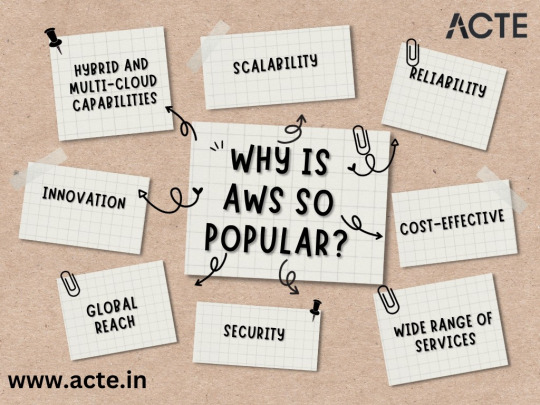
Amazon Web Services has risen to unprecedented popularity by offering unmatched scalability, reliability, cost-effectiveness, and a comprehensive service portfolio. Its commitment to security, global reach, relentless innovation, and support for hybrid/multi-cloud environments make it the preferred choice for businesses worldwide. ACTE Technologies plays a crucial role in ensuring that professionals can harness the full potential of AWS through its comprehensive training programs. As AWS continues to shape the future of cloud computing, those equipped with the knowledge and skills provided by ACTE Technologies are poised to excel in this ever-evolving landscape.
7 notes
·
View notes
Photo
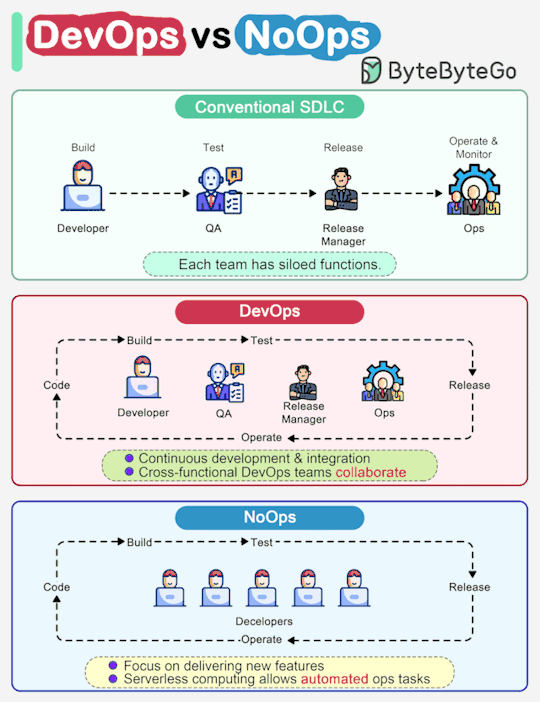
ByteByteGo nails another "a picture is worth a thousand words" infographic. This one highlights some key differences between traditional SDLC, DevOps and emerging NoOps.
In a traditional software development, code, build, test, release and monitoring are siloed functions. Each stage works independently and hands over to the next stage.
DevOps, on the other hand, encourages continuous development and collaboration between developers and operations. This shortens the overall life cycle and provides continuous software delivery.
NoOps is a newer concept with the development of serverless computing. Since we can architect the system using FaaS (Function-as-a-Service) and BaaS (Backend-as-a-Service), the cloud service providers can take care of most operations tasks. The developers can focus on feature development and automate operations tasks.
NoOps is a pragmatic and effective methodology for startups or smaller-scale applications, which moves shortens the SDLC even more than DevOps.
(via EP90: How do SQL Joins Work? - ByteByteGo Newsletter)
5 notes
·
View notes
Text
Future-Ready Enterprises: The Crucial Role of Large Vision Models (LVMs)
New Post has been published on https://thedigitalinsider.com/future-ready-enterprises-the-crucial-role-of-large-vision-models-lvms/
Future-Ready Enterprises: The Crucial Role of Large Vision Models (LVMs)


What are Large Vision Models (LVMs)
Over the last few decades, the field of Artificial Intelligence (AI) has experienced rapid growth, resulting in significant changes to various aspects of human society and business operations. AI has proven to be useful in task automation and process optimization, as well as in promoting creativity and innovation. However, as data complexity and diversity continue to increase, there is a growing need for more advanced AI models that can comprehend and handle these challenges effectively. This is where the emergence of Large Vision Models (LVMs) becomes crucial.
LVMs are a new category of AI models specifically designed for analyzing and interpreting visual information, such as images and videos, on a large scale, with impressive accuracy. Unlike traditional computer vision models that rely on manual feature crafting, LVMs leverage deep learning techniques, utilizing extensive datasets to generate authentic and diverse outputs. An outstanding feature of LVMs is their ability to seamlessly integrate visual information with other modalities, such as natural language and audio, enabling a comprehensive understanding and generation of multimodal outputs.
LVMs are defined by their key attributes and capabilities, including their proficiency in advanced image and video processing tasks related to natural language and visual information. This includes tasks like generating captions, descriptions, stories, code, and more. LVMs also exhibit multimodal learning by effectively processing information from various sources, such as text, images, videos, and audio, resulting in outputs across different modalities.
Additionally, LVMs possess adaptability through transfer learning, meaning they can apply knowledge gained from one domain or task to another, with the capability to adapt to new data or scenarios through minimal fine-tuning. Moreover, their real-time decision-making capabilities empower rapid and adaptive responses, supporting interactive applications in gaming, education, and entertainment.
How LVMs Can Boost Enterprise Performance and Innovation?
Adopting LVMs can provide enterprises with powerful and promising technology to navigate the evolving AI discipline, making them more future-ready and competitive. LVMs have the potential to enhance productivity, efficiency, and innovation across various domains and applications. However, it is important to consider the ethical, security, and integration challenges associated with LVMs, which require responsible and careful management.
Moreover, LVMs enable insightful analytics by extracting and synthesizing information from diverse visual data sources, including images, videos, and text. Their capability to generate realistic outputs, such as captions, descriptions, stories, and code based on visual inputs, empowers enterprises to make informed decisions and optimize strategies. The creative potential of LVMs emerges in their ability to develop new business models and opportunities, particularly those using visual data and multimodal capabilities.
Prominent examples of enterprises adopting LVMs for these advantages include Landing AI, a computer vision cloud platform addressing diverse computer vision challenges, and Snowflake, a cloud data platform facilitating LVM deployment through Snowpark Container Services. Additionally, OpenAI, contributes to LVM development with models like GPT-4, CLIP, DALL-E, and OpenAI Codex, capable of handling various tasks involving natural language and visual information.
In the post-pandemic landscape, LVMs offer additional benefits by assisting enterprises in adapting to remote work, online shopping trends, and digital transformation. Whether enabling remote collaboration, enhancing online marketing and sales through personalized recommendations, or contributing to digital health and wellness via telemedicine, LVMs emerge as powerful tools.
Challenges and Considerations for Enterprises in LVM Adoption
While the promises of LVMs are extensive, their adoption is not without challenges and considerations. Ethical implications are significant, covering issues related to bias, transparency, and accountability. Instances of bias in data or outputs can lead to unfair or inaccurate representations, potentially undermining the trust and fairness associated with LVMs. Thus, ensuring transparency in how LVMs operate and the accountability of developers and users for their consequences becomes essential.
Security concerns add another layer of complexity, requiring the protection of sensitive data processed by LVMs and precautions against adversarial attacks. Sensitive information, ranging from health records to financial transactions, demands robust security measures to preserve privacy, integrity, and reliability.
Integration and scalability hurdles pose additional challenges, especially for large enterprises. Ensuring compatibility with existing systems and processes becomes a crucial factor to consider. Enterprises need to explore tools and technologies that facilitate and optimize the integration of LVMs. Container services, cloud platforms, and specialized platforms for computer vision offer solutions to enhance the interoperability, performance, and accessibility of LVMs.
To tackle these challenges, enterprises must adopt best practices and frameworks for responsible LVM use. Prioritizing data quality, establishing governance policies, and complying with relevant regulations are important steps. These measures ensure the validity, consistency, and accountability of LVMs, enhancing their value, performance, and compliance within enterprise settings.
Future Trends and Possibilities for LVMs
With the adoption of digital transformation by enterprises, the domain of LVMs is poised for further evolution. Anticipated advancements in model architectures, training techniques, and application areas will drive LVMs to become more robust, efficient, and versatile. For example, self-supervised learning, which enables LVMs to learn from unlabeled data without human intervention, is expected to gain prominence.
Likewise, transformer models, renowned for their ability to process sequential data using attention mechanisms, are likely to contribute to state-of-the-art outcomes in various tasks. Similarly, Zero-shot learning, allowing LVMs to perform tasks they have not been explicitly trained on, is set to expand their capabilities even further.
Simultaneously, the scope of LVM application areas is expected to widen, encompassing new industries and domains. Medical imaging, in particular, holds promise as an avenue where LVMs could assist in the diagnosis, monitoring, and treatment of various diseases and conditions, including cancer, COVID-19, and Alzheimer’s.
In the e-commerce sector, LVMs are expected to enhance personalization, optimize pricing strategies, and increase conversion rates by analyzing and generating images and videos of products and customers. The entertainment industry also stands to benefit as LVMs contribute to the creation and distribution of captivating and immersive content across movies, games, and music.
To fully utilize the potential of these future trends, enterprises must focus on acquiring and developing the necessary skills and competencies for the adoption and implementation of LVMs. In addition to technical challenges, successfully integrating LVMs into enterprise workflows requires a clear strategic vision, a robust organizational culture, and a capable team. Key skills and competencies include data literacy, which encompasses the ability to understand, analyze, and communicate data.
The Bottom Line
In conclusion, LVMs are effective tools for enterprises, promising transformative impacts on productivity, efficiency, and innovation. Despite challenges, embracing best practices and advanced technologies can overcome hurdles. LVMs are envisioned not just as tools but as pivotal contributors to the next technological era, requiring a thoughtful approach. A practical adoption of LVMs ensures future readiness, acknowledging their evolving role for responsible integration into business processes.
#Accessibility#ai#Alzheimer's#Analytics#applications#approach#Art#artificial#Artificial Intelligence#attention#audio#automation#Bias#Business#Cancer#Cloud#cloud data#cloud platform#code#codex#Collaboration#Commerce#complexity#compliance#comprehensive#computer#Computer vision#container#content#covid
2 notes
·
View notes
Text
Navigating the Future as Azure Certifications in 2024
In the ever-evolving landscape of cloud technology, Azure certifications continue to be instrumental in shaping the careers of IT professionals and influencing the strategies of organizations worldwide. As we step into 2024, it's essential to explore the current trends, advancements, and the transformative impact that Azure certifications are poised to have in the coming year.
The Continued Relevance of Azure Certifications
Azure certifications are not mere credentials; they are gateways to expertise and recognition in the dynamic world of cloud computing. As businesses increasingly rely on cloud solutions, the demand for skilled Azure professionals continues to grow. In 2024, Azure certifications stand as key assets, ensuring that professionals possess the knowledge and skills needed to navigate the complexities of cloud technology effectively.
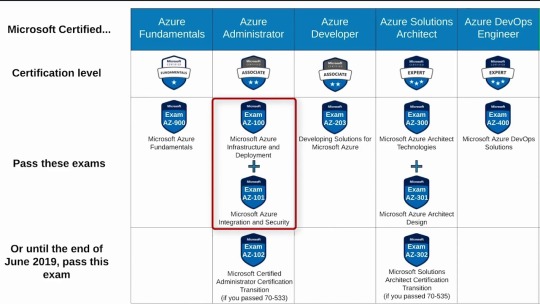
Azure Certification Paths in 2024
Azure certifications are structured into comprehensive paths, catering to individuals at various stages of their cloud journey. From foundational certifications for beginners to advanced tracks tailored for specialized roles like Azure Solutions Architect or Azure DevOps Engineer, the certification paths have evolved to align with the diverse needs of IT professionals. The year 2024 sees an increased focus on role-based certifications, allowing individuals to hone specific skills relevant to their job roles.
Key Benefits of Azure Certifications in 2024
Career Advancement:
Azure certifications are a proven catalyst for career growth. In 2024, as businesses seek skilled professionals, holding an Azure certification becomes a valuable asset for those aiming to advance their careers in cloud technology.
Industry Recognition:
Globally recognized, Azure certifications validate one's expertise in Microsoft's cloud services. Employers across industries acknowledge and value these certifications as a mark of proficiency in handling Azure-based solutions.
Continuous Learning Culture:
In 2024, Azure certifications are not just about achieving a one-time qualification; they embody a commitment to continuous learning. Microsoft regularly updates its certification paths to align with emerging technologies, encouraging professionals to stay abreast of the latest industry trends.
Increased Employability:
As the job market becomes more competitive, possessing Azure certifications enhances employability. In 2024, businesses are actively seeking candidates with practical Azure skills, making certification holders highly sought after.
Emerging Trends in Azure Certifications for 2024
Micro-Certifications:
2024 witnesses a rise in micro-certifications, focusing on specific, targeted skills. These bite-sized certifications allow professionals to demonstrate expertise in niche areas, providing a more granular approach to skill validation.
Scenario-Based Assessments:
Azure certification exams in 2024 are increasingly incorporating scenario-based questions. This shift aims to evaluate not just theoretical knowledge but the ability to apply that knowledge in practical, real-world situations.
Integration of AI and ML:
With the growing importance of artificial intelligence (AI) and machine learning (ML), Azure certifications in 2024 are placing a greater emphasis on these technologies. Certification tracks dedicated to AI and ML applications within Azure are gaining prominence.
Focus on Security:
In response to the heightened concern for cybersecurity, Azure certifications in 2024 place a significant focus on security-related tracks. Azure Security Engineer certifications are expected to be in high demand as organizations prioritize securing their cloud environments.
Tips for Success in Azure Certifications 2024
Stay Updated: Given the evolving nature of technology, staying updated with the latest Azure services and features is crucial. Regularly check Microsoft's official documentation and announcements for any updates.
Hands-On Experience: Practical experience is invaluable. Utilize Azure's sandbox environments, participate in real-world projects, and engage with the Azure portal to reinforce your theoretical knowledge.
Leverage Learning Resources: Microsoft provides a wealth of learning resources, including online courses, documentation, and practice exams. Take advantage of these resources to supplement your preparation.
Join the Azure Community: Engage with the Azure community through forums, webinars, and social media. Networking with professionals in the field can provide insights, tips, and support during your certification journey.
Conclusion
As we venture into 2024, Azure certifications stand as pivotal tools for IT professionals aiming to thrive in the dynamic world of cloud technology. Whether you are starting your journey with foundational certifications or advancing your skills with specialized tracks, Azure certifications in 2024 represent more than just qualifications – they symbolize a commitment to excellence, continuous learning, and a future shaped by innovation in the cloud. Embrace the opportunities, stay ahead of the curve, and let Azure certifications be your guide to success in the ever-evolving realm of cloud proficiency.

Frequently Asked Questions (FAQs)
What are the new Azure certifications introduced in 2024?
As of 2024, Microsoft has introduced several new certifications to align with emerging technologies. Notable additions include specialized tracks focusing on AI, ML, and advanced security.
How has the exam format changed for 2024?
The exam format in 2024 has evolved to include more scenario-based questions. This change is aimed at assessing practical application skills in addition to theoretical knowledge.
Are there any prerequisites for Azure certifications in 2024?
Prerequisites vary based on the specific certification. While some foundational certifications may have no prerequisites, advanced certifications often require prior experience or the completion of specific lower-level certifications.
Can I still take exams for older Azure certifications in 2024?
Microsoft often provides a transition period for older certifications, allowing candidates to complete them even as new certifications are introduced. However, it's advisable to check Microsoft's official documentation for specific details.
How frequently are Azure certifications updated?
Azure certifications are regularly updated to stay aligned with the latest technologies and industry trends. Microsoft recommends that candidates stay informed about updates through official communication channels.
4 notes
·
View notes
Text
Navigating the Cloud: Unleashing Amazon Web Services' (AWS) Impact on Digital Transformation
In the ever-evolving realm of technology, cloud computing stands as a transformative force, offering unparalleled flexibility, scalability, and cost-effectiveness. At the forefront of this paradigm shift is Amazon Web Services (AWS), a comprehensive cloud computing platform provided by Amazon.com. For those eager to elevate their proficiency in AWS, specialized training initiatives like AWS Training in Pune offer invaluable insights into maximizing the potential of AWS services.

Exploring AWS: A Catalyst for Digital Transformation
As we traverse the dynamic landscape of cloud computing, AWS emerges as a pivotal player, empowering businesses, individuals, and organizations to fully embrace the capabilities of the cloud. Let's delve into the multifaceted ways in which AWS is reshaping the digital landscape and providing a robust foundation for innovation.
Decoding the Heart of AWS
AWS in a Nutshell: Amazon Web Services serves as a robust cloud computing platform, delivering a diverse range of scalable and cost-effective services. Tailored to meet the needs of individual users and large enterprises alike, AWS acts as a gateway, unlocking the potential of the cloud for various applications.
Core Function of AWS: At its essence, AWS is designed to offer on-demand computing resources over the internet. This revolutionary approach eliminates the need for substantial upfront investments in hardware and infrastructure, providing users with seamless access to a myriad of services.
AWS Toolkit: Key Services Redefined
Empowering Scalable Computing: Through Elastic Compute Cloud (EC2) instances, AWS furnishes virtual servers, enabling users to dynamically scale computing resources based on demand. This adaptability is paramount for handling fluctuating workloads without the constraints of physical hardware.
Versatile Storage Solutions: AWS presents a spectrum of storage options, such as Amazon Simple Storage Service (S3) for object storage, Amazon Elastic Block Store (EBS) for block storage, and Amazon Glacier for long-term archival. These services deliver robust and scalable solutions to address diverse data storage needs.
Streamlining Database Services: Managed database services like Amazon Relational Database Service (RDS) and Amazon DynamoDB (NoSQL database) streamline efficient data storage and retrieval. AWS simplifies the intricacies of database management, ensuring both reliability and performance.
AI and Machine Learning Prowess: AWS empowers users with machine learning services, exemplified by Amazon SageMaker. This facilitates the seamless development, training, and deployment of machine learning models, opening new avenues for businesses integrating artificial intelligence into their applications. To master AWS intricacies, individuals can leverage the Best AWS Online Training for comprehensive insights.
In-Depth Analytics: Amazon Redshift and Amazon Athena play pivotal roles in analyzing vast datasets and extracting valuable insights. These services empower businesses to make informed, data-driven decisions, fostering innovation and sustainable growth.
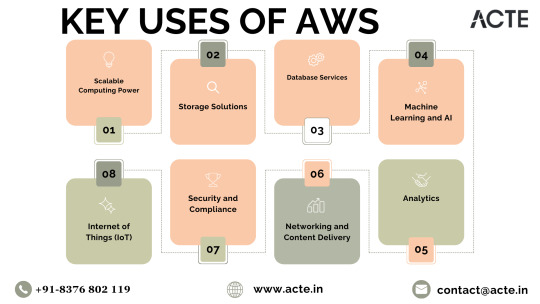
Networking and Content Delivery Excellence: AWS services, such as Amazon Virtual Private Cloud (VPC) for network isolation and Amazon CloudFront for content delivery, ensure low-latency access to resources. These features enhance the overall user experience in the digital realm.
Commitment to Security and Compliance: With an unwavering emphasis on security, AWS provides a comprehensive suite of services and features to fortify the protection of applications and data. Furthermore, AWS aligns with various industry standards and certifications, instilling confidence in users regarding data protection.
Championing the Internet of Things (IoT): AWS IoT services empower users to seamlessly connect and manage IoT devices, collect and analyze data, and implement IoT applications. This aligns seamlessly with the burgeoning trend of interconnected devices and the escalating importance of IoT across various industries.
Closing Thoughts: AWS, the Catalyst for Transformation
In conclusion, Amazon Web Services stands as a pioneering force, reshaping how businesses and individuals harness the power of the cloud. By providing a dynamic, scalable, and cost-effective infrastructure, AWS empowers users to redirect their focus towards innovation, unburdened by the complexities of managing hardware and infrastructure. As technology advances, AWS remains a stalwart, propelling diverse industries into a future brimming with endless possibilities. The journey into the cloud with AWS signifies more than just migration; it's a profound transformation, unlocking novel potentials and propelling organizations toward an era of perpetual innovation.
2 notes
·
View notes
Text
Title: Amazon EC2: Unleash Your Superpowers in the Cloud!
Introduction:
Welcome to the extraordinary world of Amazon Elastic Compute Cloud (EC2), where you can harness the power of the cloud to achieve remarkable feats. In this short and simple blog post, we'll explore the key features and benefits of Amazon EC2, empowering you to become a cloud computing superhero!

Elasticity and Scalability: With EC2, you have the ability to scale your compute resources up or down effortlessly. No task is too big or small as you adapt to changing workloads with ease.
Versatile Instance Types: EC2 offers a wide range of instance types tailored to your specific needs. Choose the perfect fit, whether you require general-purpose instances or high-performance computing clusters.
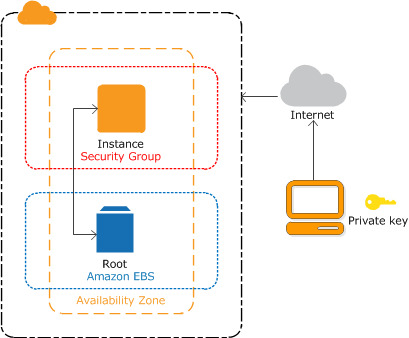
Security and Control: EC2 ensures the utmost security for your applications and data. You have complete control over your instances, including firewall settings and storage encryption, bolstering your defenses against threats.
Storage Options: EC2 provides flexible storage options, including persistent block-level storage (EBS) and scalable file storage (EFS). Leverage these options to securely store and access your data.
Seamless Integration: EC2 seamlessly integrates with other AWS services, allowing you to build comprehensive cloud architectures. Connect with databases, perform scalable data processing, and create a powerful ecosystem.

Conclusion:
With Amazon EC2, you possess the superpowers needed to conquer the cloud. Embrace the elasticity, select the right instance type, secure your applications, leverage storage options, and integrate seamlessly with other services. It's time to unleash your inner superhero and embark on an exciting cloud computing adventure with Amazon EC2!
15 notes
·
View notes
Text
Platform as a Service (PaaS)

Platform as a Service (PaaS) is a cloud computing service model that provides a platform allowing customers to develop, run, and manage applications without the complexity of building and maintaining the underlying infrastructure. PaaS provides a comprehensive environment that includes development tools, middleware, and runtime services to streamline the application development and deployment process. Here are key features and aspects of PaaS:
Key Features of PaaS:
Development Tools:
PaaS offers a set of tools and services for application development, including integrated development environments (IDEs), version control, and testing frameworks.
Middleware:
PaaS includes middleware services that facilitate communication and integration between different components of an application. This can include databases, messaging systems, and more.
Runtime Services:
PaaS provides runtime services such as operating systems, web servers, and runtime environments. Developers can focus on writing code without worrying about the underlying infrastructure.
Scalability:
PaaS platforms typically offer automatic scaling to handle changes in application demand. This ensures that resources are allocated efficiently, and the application can handle varying workloads.
Multi-Tenancy:
PaaS platforms often support multi-tenancy, allowing multiple users or organizations to share the same infrastructure and resources while maintaining isolation.
Integration with Services:
PaaS allows integration with various external services, such as databases, messaging systems, authentication services, and more, to enhance the functionality of applications.
Deployment and Management:
PaaS simplifies the deployment process, offering tools for application deployment, version control, and monitoring. It often includes management tools for application lifecycle management.
Advantages of PaaS:
Faster Development:
PaaS accelerates the development process by providing pre-built tools and services, reducing the need for developers to manage infrastructure details.
Cost Efficiency:
Developers can focus on coding, while the PaaS provider handles infrastructure maintenance and management, leading to cost savings.
Scalability and Flexibility:
PaaS platforms enable easy scaling of applications based on demand, providing flexibility to handle varying workloads.
Reduced Complexity:
Developers don't need to worry about managing the underlying infrastructure, operating systems, or runtime environments, reducing complexity and allowing them to focus on writing code.
Collaboration:
PaaS facilitates collaboration among development teams, as they can work on the same platform and easily share resources.
Automatic Updates:
PaaS providers handle updates and patches for underlying software, ensuring that the platform is up-to-date and secure.
Resource Optimization:
PaaS platforms optimize resource usage, allocating resources based on application requirements to avoid overprovisioning.
Rapid Prototyping:
Developers can quickly prototype and experiment with ideas without the need to set up and configure infrastructure.
Cloud computing training course in Pune
3 notes
·
View notes
Text
Azure Data Engineering Tools For Data Engineers

Azure is a cloud computing platform provided by Microsoft, which presents an extensive array of data engineering tools. These tools serve to assist data engineers in constructing and upholding data systems that possess the qualities of scalability, reliability, and security. Moreover, Azure data engineering tools facilitate the creation and management of data systems that cater to the unique requirements of an organization.
In this article, we will explore nine key Azure data engineering tools that should be in every data engineer’s toolkit. Whether you’re a beginner in data engineering or aiming to enhance your skills, these Azure tools are crucial for your career development.
Microsoft Azure Databricks
Azure Databricks is a managed version of Databricks, a popular data analytics and machine learning platform. It offers one-click installation, faster workflows, and collaborative workspaces for data scientists and engineers. Azure Databricks seamlessly integrates with Azure’s computation and storage resources, making it an excellent choice for collaborative data projects.
Microsoft Azure Data Factory
Microsoft Azure Data Factory (ADF) is a fully-managed, serverless data integration tool designed to handle data at scale. It enables data engineers to acquire, analyze, and process large volumes of data efficiently. ADF supports various use cases, including data engineering, operational data integration, analytics, and data warehousing.
Microsoft Azure Stream Analytics
Azure Stream Analytics is a real-time, complex event-processing engine designed to analyze and process large volumes of fast-streaming data from various sources. It is a critical tool for data engineers dealing with real-time data analysis and processing.
Microsoft Azure Data Lake Storage
Azure Data Lake Storage provides a scalable and secure data lake solution for data scientists, developers, and analysts. It allows organizations to store data of any type and size while supporting low-latency workloads. Data engineers can take advantage of this infrastructure to build and maintain data pipelines. Azure Data Lake Storage also offers enterprise-grade security features for data collaboration.
Microsoft Azure Synapse Analytics
Azure Synapse Analytics is an integrated platform solution that combines data warehousing, data connectors, ETL pipelines, analytics tools, big data scalability, and visualization capabilities. Data engineers can efficiently process data for warehousing and analytics using Synapse Pipelines’ ETL and data integration capabilities.
Microsoft Azure Cosmos DB
Azure Cosmos DB is a fully managed and server-less distributed database service that supports multiple data models, including PostgreSQL, MongoDB, and Apache Cassandra. It offers automatic and immediate scalability, single-digit millisecond reads and writes, and high availability for NoSQL data. Azure Cosmos DB is a versatile tool for data engineers looking to develop high-performance applications.
Microsoft Azure SQL Database
Azure SQL Database is a fully managed and continually updated relational database service in the cloud. It offers native support for services like Azure Functions and Azure App Service, simplifying application development. Data engineers can use Azure SQL Database to handle real-time data ingestion tasks efficiently.
Microsoft Azure MariaDB
Azure Database for MariaDB provides seamless integration with Azure Web Apps and supports popular open-source frameworks and languages like WordPress and Drupal. It offers built-in monitoring, security, automatic backups, and patching at no additional cost.
Microsoft Azure PostgreSQL Database
Azure PostgreSQL Database is a fully managed open-source database service designed to emphasize application innovation rather than database management. It supports various open-source frameworks and languages and offers superior security, performance optimization through AI, and high uptime guarantees.
Whether you’re a novice data engineer or an experienced professional, mastering these Azure data engineering tools is essential for advancing your career in the data-driven world. As technology evolves and data continues to grow, data engineers with expertise in Azure tools are in high demand. Start your journey to becoming a proficient data engineer with these powerful Azure tools and resources.
Unlock the full potential of your data engineering career with Datavalley. As you start your journey to becoming a skilled data engineer, it’s essential to equip yourself with the right tools and knowledge. The Azure data engineering tools we’ve explored in this article are your gateway to effectively managing and using data for impactful insights and decision-making.
To take your data engineering skills to the next level and gain practical, hands-on experience with these tools, we invite you to join the courses at Datavalley. Our comprehensive data engineering courses are designed to provide you with the expertise you need to excel in the dynamic field of data engineering. Whether you’re just starting or looking to advance your career, Datavalley’s courses offer a structured learning path and real-world projects that will set you on the path to success.
Course format:
Subject: Data Engineering Classes: 200 hours of live classes Lectures: 199 lectures Projects: Collaborative projects and mini projects for each module Level: All levels Scholarship: Up to 70% scholarship on this course Interactive activities: labs, quizzes, scenario walk-throughs Placement Assistance: Resume preparation, soft skills training, interview preparation
Subject: DevOps Classes: 180+ hours of live classes Lectures: 300 lectures Projects: Collaborative projects and mini projects for each module Level: All levels Scholarship: Up to 67% scholarship on this course Interactive activities: labs, quizzes, scenario walk-throughs Placement Assistance: Resume preparation, soft skills training, interview preparation
For more details on the Data Engineering courses, visit Datavalley’s official website.
#datavalley#dataexperts#data engineering#data analytics#dataexcellence#data science#power bi#business intelligence#data analytics course#data science course#data engineering course#data engineering training
3 notes
·
View notes
Text
Azure’s Evolution: What Every IT Pro Should Know About Microsoft’s Cloud
IT professionals need to keep ahead of the curve in the ever changing world of technology today. The cloud has become an integral part of modern IT infrastructure, and one of the leading players in this domain is Microsoft Azure. Azure’s evolution over the years has been nothing short of remarkable, making it essential for IT pros to understand its journey and keep pace with its innovations. In this blog, we’ll take you on a journey through Azure’s transformation, exploring its history, service portfolio, global reach, security measures, and much more. By the end of this article, you’ll have a comprehensive understanding of what every IT pro should know about Microsoft’s cloud platform.
Historical Overview
Azure’s Humble Beginnings
Microsoft Azure was officially launched in February 2010 as “Windows Azure.” It began as a platform-as-a-service (PaaS) offering primarily focused on providing Windows-based cloud services.
The Azure Branding Shift
In 2014, Microsoft rebranded Windows Azure to Microsoft Azure to reflect its broader support for various operating systems, programming languages, and frameworks. This rebranding marked a significant shift in Azure’s identity and capabilities.
Key Milestones
Over the years, Azure has achieved numerous milestones, including the introduction of Azure Virtual Machines, Azure App Service, and the Azure Marketplace. These milestones have expanded its capabilities and made it a go-to choice for businesses of all sizes.
Expanding Service Portfolio
Azure’s service portfolio has grown exponentially since its inception. Today, it offers a vast array of services catering to diverse needs:
Compute Services: Azure provides a range of options, from virtual machines (VMs) to serverless computing with Azure Functions.
Data Services: Azure offers data storage solutions like Azure SQL Database, Cosmos DB, and Azure Data Lake Storage.
AI and Machine Learning: With Azure Machine Learning and Cognitive Services, IT pros can harness the power of AI for their applications.
IoT Solutions: Azure IoT Hub and IoT Central simplify the development and management of IoT solutions.
Azure Regions and Global Reach
Azure boasts an extensive network of data centers spread across the globe. This global presence offers several advantages:
Scalability: IT pros can easily scale their applications by deploying resources in multiple regions.
Redundancy: Azure’s global datacenter presence ensures high availability and data redundancy.
Data Sovereignty: Choosing the right Azure region is crucial for data compliance and sovereignty.
Integration and Hybrid Solutions
Azure’s integration capabilities are a boon for businesses with hybrid cloud needs. Azure Arc, for instance, allows you to manage on-premises, multi-cloud, and edge environments through a unified interface. Azure’s compatibility with other cloud providers simplifies multi-cloud management.
Security and Compliance
Azure has made significant strides in security and compliance. It offers features like Azure Security Center, Azure Active Directory, and extensive compliance certifications. IT pros can leverage these tools to meet stringent security and regulatory requirements.
Azure Marketplace and Third-Party Offerings
Azure Marketplace is a treasure trove of third-party solutions that complement Azure services. IT pros can explore a wide range of offerings, from monitoring tools to cybersecurity solutions, to enhance their Azure deployments.
Azure DevOps and Automation
Automation is key to efficiently managing Azure resources. Azure DevOps services and tools facilitate continuous integration and continuous delivery (CI/CD), ensuring faster and more reliable application deployments.
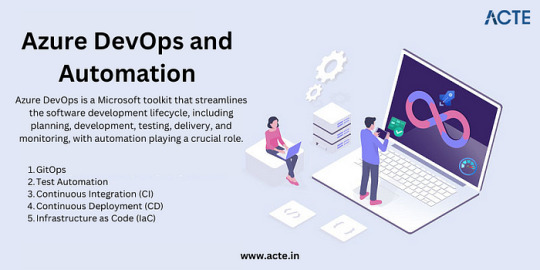
Monitoring and Management
Azure offers robust monitoring and management tools to help IT pros optimize resource usage, troubleshoot issues, and gain insights into their Azure deployments. Best practices for resource management can help reduce costs and improve performance.
Future Trends and Innovations
As the technology landscape continues to evolve, Azure remains at the forefront of innovation. Keep an eye on trends like edge computing and quantum computing, as Azure is likely to play a significant role in these domains.
Training and Certification
To excel in your IT career, consider pursuing Azure certifications. ACTE Institute offers a range of certifications, such as the Microsoft Azure course to validate your expertise in Azure technologies.

In conclusion, Azure’s evolution is a testament to Microsoft’s commitment to cloud innovation. As an IT professional, understanding Azure’s history, service offerings, global reach, security measures, and future trends is paramount. Azure’s versatility and comprehensive toolset make it a top choice for organizations worldwide. By staying informed and adapting to Azure’s evolving landscape, IT pros can remain at the forefront of cloud technology, delivering value to their organizations and clients in an ever-changing digital world. Embrace Azure’s evolution, and empower yourself for a successful future in the cloud.
#microsoft azure#tech#education#cloud services#azure devops#information technology#automation#innovation
2 notes
·
View notes
Text
Demystifying Microsoft Azure Cloud Hosting and PaaS Services: A Comprehensive Guide
In the rapidly evolving landscape of cloud computing, Microsoft Azure has emerged as a powerful player, offering a wide range of services to help businesses build, deploy, and manage applications and infrastructure. One of the standout features of Azure is its Cloud Hosting and Platform-as-a-Service (PaaS) offerings, which enable organizations to harness the benefits of the cloud while minimizing the complexities of infrastructure management. In this comprehensive guide, we'll dive deep into Microsoft Azure Cloud Hosting and PaaS Services, demystifying their features, benefits, and use cases.
Understanding Microsoft Azure Cloud Hosting
Cloud hosting, as the name suggests, involves hosting applications and services on virtual servers that are accessed over the internet. Microsoft Azure provides a robust cloud hosting environment, allowing businesses to scale up or down as needed, pay for only the resources they consume, and reduce the burden of maintaining physical hardware. Here are some key components of Azure Cloud Hosting:
Virtual Machines (VMs): Azure offers a variety of pre-configured virtual machine sizes that cater to different workloads. These VMs can run Windows or Linux operating systems and can be easily scaled to meet changing demands.
Azure App Service: This PaaS offering allows developers to build, deploy, and manage web applications without dealing with the underlying infrastructure. It supports various programming languages and frameworks, making it suitable for a wide range of applications.
Azure Kubernetes Service (AKS): For containerized applications, AKS provides a managed Kubernetes service. Kubernetes simplifies the deployment and management of containerized applications, and AKS further streamlines this process.
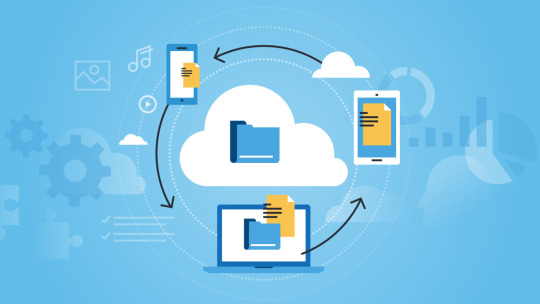
Exploring Azure Platform-as-a-Service (PaaS) Services
Platform-as-a-Service (PaaS) takes cloud hosting a step further by abstracting away even more of the infrastructure management, allowing developers to focus primarily on building and deploying applications. Azure offers an array of PaaS services that cater to different needs:
Azure SQL Database: This fully managed relational database service eliminates the need for database administration tasks such as patching and backups. It offers high availability, security, and scalability for your data.
Azure Cosmos DB: For globally distributed, highly responsive applications, Azure Cosmos DB is a NoSQL database service that guarantees low-latency access and automatic scaling.
Azure Functions: A serverless compute service, Azure Functions allows you to run code in response to events without provisioning or managing servers. It's ideal for event-driven architectures.
Azure Logic Apps: This service enables you to automate workflows and integrate various applications and services without writing extensive code. It's great for orchestrating complex business processes.
Benefits of Azure Cloud Hosting and PaaS Services
Scalability: Azure's elasticity allows you to scale resources up or down based on demand. This ensures optimal performance and cost efficiency.
Cost Management: With pay-as-you-go pricing, you only pay for the resources you use. Azure also provides cost management tools to monitor and optimize spending.
High Availability: Azure's data centers are distributed globally, providing redundancy and ensuring high availability for your applications.
Security and Compliance: Azure offers robust security features and compliance certifications, helping you meet industry standards and regulations.
Developer Productivity: PaaS services like Azure App Service and Azure Functions streamline development by handling infrastructure tasks, allowing developers to focus on writing code.
Use Cases for Azure Cloud Hosting and PaaS
Web Applications: Azure App Service is ideal for hosting web applications, enabling easy deployment and scaling without managing the underlying servers.
Microservices: Azure Kubernetes Service supports the deployment and orchestration of microservices, making it suitable for complex applications with multiple components.
Data-Driven Applications: Azure's PaaS offerings like Azure SQL Database and Azure Cosmos DB are well-suited for applications that rely heavily on data storage and processing.
Serverless Architecture: Azure Functions and Logic Apps are perfect for building serverless applications that respond to events in real-time.
In conclusion, Microsoft Azure's Cloud Hosting and PaaS Services provide businesses with the tools they need to harness the power of the cloud while minimizing the complexities of infrastructure management. With scalability, cost-efficiency, and a wide array of services, Azure empowers developers and organizations to innovate and deliver impactful applications. Whether you're hosting a web application, managing data, or adopting a serverless approach, Azure has the tools to support your journey into the cloud.
#Microsoft Azure#Internet of Things#Azure AI#Azure Analytics#Azure IoT Services#Azure Applications#Microsoft Azure PaaS
2 notes
·
View notes
Text
The Future of AWS: Innovations, Challenges, and Opportunities
As we stand on the top of an increasingly digital and interconnected world, the role of cloud computing has never been more vital. At the forefront of this technological revolution stands Amazon Web Services (AWS), a A leader and an innovator in the field of cloud computing. AWS has not only transformed the way businesses operate but has also ignited a global shift towards cloud-centric solutions. Now, as we gaze into the horizon, it's time to dive into the future of AWS—a future marked by innovations, challenges, and boundless opportunities.

In this exploration, we will navigate through the evolving landscape of AWS, where every day brings new advancements, complex challenges, and a multitude of avenues for growth and success. This journey is a testament to the enduring spirit of innovation that propels AWS forward, the challenges it must overcome to maintain its leadership, and the vast array of opportunities it presents to businesses, developers, and tech enthusiasts alike.
Join us as we embark on a voyage into the future of AWS, where the cloud continues to shape our digital world, and where AWS stands as a beacon guiding us through this transformative era.
Constant Innovation: The AWS Edge
One of AWS's defining characteristics is its unwavering commitment to innovation. AWS has a history of introducing groundbreaking services and features that cater to the evolving needs of businesses. In the future, we can expect this commitment to innovation to reach new heights. AWS will likely continue to push the boundaries of cloud technology, delivering cutting-edge solutions to its users.
This dedication to innovation is particularly evident in AWS's investments in machine learning (ML) and artificial intelligence (AI). With services like Amazon SageMaker and AWS Deep Learning, AWS has democratized ML and AI, making these advanced technologies accessible to developers and businesses of all sizes. In the future, we can anticipate even more sophisticated ML and AI capabilities, empowering businesses to extract valuable insights and create intelligent applications.
Global Reach: Expanding the AWS Footprint
AWS's global infrastructure, comprising data centers in numerous regions worldwide, has been key in providing low-latency access and backup to customers globally. As the demand for cloud services continues to surge, AWS's expansion efforts are expected to persist. This means an even broader global presence, ensuring that AWS remains a reliable partner for organizations seeking to operate on a global scale.
Industry-Specific Solutions: Tailored for Success
Every industry has its unique challenges and requirements. AWS recognizes this and has been increasingly tailoring its services to cater to specific industries, including healthcare, finance, manufacturing, and more. This trend is likely to intensify in the future, with AWS offering industry-specific solutions and compliance certifications. This ensures that organizations in regulated sectors can leverage the power of the cloud while adhering to strict industry standards.
Edge Computing: A Thriving Frontier
The rise of the Internet of Things (IoT) and the growing importance of edge computing are reshaping the technology landscape. AWS is positioned to capitalize on this trend by investing in edge services. Edge computing enables real-time data processing and analysis at the edge of the network, a capability that's becoming increasingly critical in scenarios like autonomous vehicles, smart cities, and industrial automation.
Sustainability Initiatives: A Greener Cloud
Sustainability is a primary concern in today's mindful world. AWS has already committed to sustainability with initiatives like the "AWS Sustainability Accelerator." In the future, we can expect more green data centers, eco-friendly practices, and a continued focus on reducing the harmful effects of cloud services. AWS's dedication to sustainability aligns with the broader industry trend towards environmentally responsible computing.
Security and Compliance: Paramount Concerns
The ever-growing importance of data privacy and security cannot be overstated. AWS has been proactive in enhancing its security services and compliance offerings. This trend will likely continue, with AWS introducing advanced security measures and compliance certifications to meet the evolving threat landscape and regulatory requirements.
Serverless Computing: A Paradigm Shift
Serverless computing, characterized by services like AWS Lambda and AWS Fargate, is gaining rapid adoption due to its simplicity and cost-effectiveness. In the future, we can expect serverless architecture to become even more mainstream. AWS will continue to refine and expand its serverless offerings, simplifying application deployment and management for developers and organizations.
Hybrid and Multi-Cloud Solutions: Bridging the Gap
AWS recognizes the significance of hybrid and multi-cloud environments, where organizations blend on-premises and cloud resources. Future developments will likely focus on effortless integration between these environments, enabling businesses to leverage the advantages of both on-premises and cloud-based infrastructure.
Training and Certification: Nurturing Talent
AWS professionals with advanced skills are in more demand. Platforms like ACTE Technologies have stepped up to offer comprehensive AWS training and certification programs. These programs equip individuals with the skills needed to excel in the world of AWS and cloud computing. As the cloud becomes increasingly integral to business operations, certified AWS professionals will continue to be in high demand.
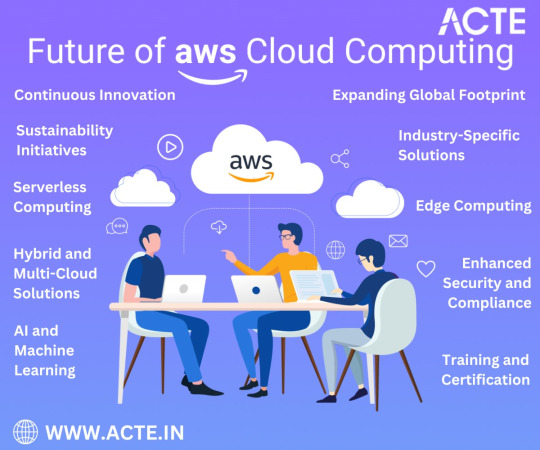
In conclusion, the future of AWS shines brightly with promise. As a expert in cloud computing, AWS remains committed to continuous innovation, global expansion, industry-specific solutions, sustainability, security, and empowering businesses with advanced technologies. For those looking to embark on a career or excel further in the realm of AWS, platforms like ACTE Technologies offer industry-aligned training and certification programs.
As businesses increasingly rely on cloud services to drive their digital transformation, AWS will continue to play a key role in reshaping industries and empowering innovation. Whether you are an aspiring cloud professional or a seasoned expert, staying ahead of AWS's evolving landscape is most important. The future of AWS is not just about technology; it's about the limitless possibilities it offers to organizations and individuals willing to embrace the cloud's transformative power.
8 notes
·
View notes